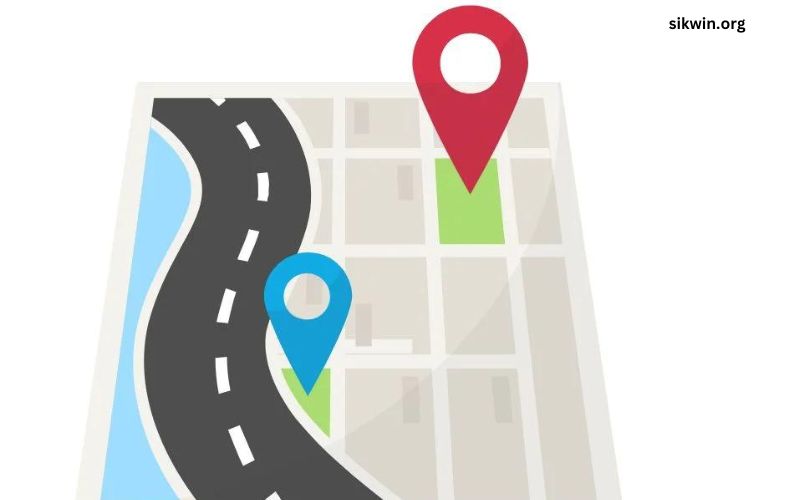The postal code system, commonly referred to as the pincode or ZIP code in various countries, is a series of letters or digits or both, assigned to geographical areas to facilitate the sorting and delivery of mail. Each pincode represents a specific area, making it easier for postal services to manage and distribute mail efficiently. This system, which plays a crucial role in the smooth operation of mail services, also holds significant importance for businesses, emergency services, and location-based services.
The Origins and Evolution of Pincode Systems
The concept of a postal code system dates back to the early 20th century. The first postal code system was introduced in Ukraine in 1932, but it was the United States that popularized the concept with the introduction of the ZIP code in 1963. ZIP, an acronym for “Zone Improvement Plan,” aimed to improve the efficiency and speed of mail delivery by segregating areas into different zones.
Following the success of the ZIP code in the United States, many countries adopted similar systems. In India, the Postal Index Number (PIN) was introduced on 15 August 1972 by Shriram Bhikaji Velankar, an additional secretary in the Union Ministry of Communications. The Indian PIN code system is a six-digit code, where each digit signifies a specific geographical region or administrative unit, thereby streamlining mail sorting and delivery.
Structure and Significance of Pincodes
A pincode, regardless of the country, usually follows a specific structure that encodes information about the location. For instance, the Indian PIN code system is structured as follows:
- The first digit indicates the region.
- The second digit represents the sub-region.
- The third digit signifies the sorting district.
- The last three digits indicate the individual post office.
This hierarchical structure ensures that each pincode can be traced back to a precise geographical location, facilitating efficient mail sorting and delivery. The system’s design helps postal services handle millions of mail items daily, minimizing errors and delays.
Pincode and Its Role in Daily Life
Pincodes are more than just numbers for sorting mail; they play a vital role in various aspects of daily life. Here are some of the critical areas where pincodes are indispensable:
- Mail and Parcel Delivery: The primary purpose of a pincode is to ensure that mail and parcels reach their intended destinations promptly. By sorting mail based on pincodes, postal services can significantly reduce delivery times and improve accuracy.
- E-commerce: In the era of online shopping, pincodes have become crucial for e-commerce companies. They help in determining delivery charges, estimating delivery times, and identifying serviceable areas. Pincodes also assist in inventory management and logistics planning.
- Emergency Services: Emergency services such as ambulances, fire brigades, and police rely on pincodes to locate addresses quickly. Accurate pincode information can mean the difference between life and death in critical situations.
- Geographical Mapping: Pincodes are used in various applications like geographical mapping and demographic analysis. They help in identifying population density, regional distribution of services, and planning public infrastructure.
- Financial Services: Banks and financial institutions use pincodes to determine service eligibility, allocate resources, and manage customer databases. Pincode information is crucial for fraud detection and prevention.
- Marketing and Sales: Businesses use pincodes to target their marketing efforts. By analyzing pincode data, companies can identify potential markets, plan promotional campaigns, and optimize sales strategies.
Challenges and Innovations in Pincode Systems
While pincodes have revolutionized postal services, they are not without challenges. One of the significant issues is the overlapping of pincodes in densely populated areas, leading to confusion and delays. Additionally, rural and remote areas often face problems due to inadequate pincode coverage, affecting mail delivery and access to services.
To address these challenges, innovations and improvements are continually being made in pincode systems. For instance, the advent of digital mapping technologies and Geographic Information Systems (GIS) has enhanced the accuracy and efficiency of pincode-based services. Integration with GPS technology allows for real-time tracking and precise location identification, improving service delivery.
Furthermore, some countries are experimenting with alphanumeric and more granular pincode systems to better cater to densely populated and rapidly expanding urban areas. These innovations aim to ensure that the pincode system remains robust and capable of meeting the demands of modern society.
Case Study: The Pincode of My Current Location
Let’s take a closer look at a specific pincode to understand how it functions and its impact on the local community. For this case study, we’ll examine the pincode 560001, which belongs to the city of Bangalore, India.
Location and Coverage
Pincode 560001 covers areas in the heart of Bangalore, including landmarks such as M.G. Road, Brigade Road, and Commercial Street. This area is a bustling commercial and residential zone, known for its vibrant atmosphere and historical significance.
Economic Significance
The area under pincode 560001 is one of the most economically significant zones in Bangalore. It hosts numerous retail outlets, corporate offices, restaurants, and entertainment venues. The presence of such establishments makes this pincode vital for business operations and logistics.
Challenges and Solutions
Due to its high population density and commercial activity, the 560001 pincode area faces challenges such as traffic congestion and limited parking space. These issues often impact the efficiency of mail and parcel delivery services. To mitigate these problems, local authorities have implemented measures such as designated delivery times, dedicated parking zones for delivery vehicles, and the use of electric scooters and bicycles for faster, eco-friendly deliveries.
Impact on Residents
For residents, the 560001 pincode means access to a plethora of services and amenities. It also brings the convenience of fast and reliable mail delivery. However, the high level of commercial activity can sometimes lead to delays and disruptions. To address these concerns, local postal services have set up additional sorting centers and employed advanced tracking systems to ensure timely delivery.
Technological Integration
The integration of technology has significantly improved the efficiency of services in the 560001 area. GPS-enabled tracking systems allow residents and businesses to monitor the status of their deliveries in real-time. Additionally, mobile apps and online portals provide easy access to postal services, including scheduling pickups, checking pincode information, and reporting issues.
Future of Pincode Systems
The future of pincode systems lies in their ability to adapt to the changing needs of society. As urban areas continue to grow and technology advances, pincode systems will need to evolve to maintain their relevance and efficiency. Here are some potential developments:
- Dynamic Pincode Systems: In the future, we may see the introduction of dynamic pincode systems that can adapt in real-time to changes in population density, infrastructure development, and urban planning. Such systems would be more responsive to the needs of modern cities.
- Enhanced Integration with Technology: Continued integration with digital technologies, such as artificial intelligence and machine learning, will improve the accuracy and efficiency of pincode-based services. These technologies can help predict delivery times, optimize routes, and manage resources more effectively.
- Global Standardization: Efforts to standardize pincode systems globally could enhance international mail and parcel delivery services. A unified system would simplify cross-border logistics, reduce errors, and improve customer satisfaction.
- Increased Granularity: More granular pincode systems, with codes assigned to smaller areas or even individual buildings, could enhance service delivery in densely populated urban centers. This approach would allow for more precise location identification and better resource allocation.
Conclusion
Pincodes are an integral part of our daily lives, influencing everything from mail delivery to emergency services and business operations. The system’s efficiency and accuracy have made it indispensable in the modern world. As we move forward, innovations and technological advancements will continue to shape the future of pincode systems, ensuring they remain relevant and capable of meeting the evolving needs of society. Understanding the significance of pincodes and how they function can help us appreciate the complexities of our postal systems and the crucial role they play in connecting people and places.




